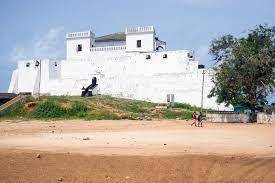Axim, a seaside city and the seat of Nzema East Municipality in Ghana's Western Region, is where you can find Fort Saint Anthony. It was constructed by the Portuguese in 1515, and after being taken over by the Dutch, it became a part of the Dutch Gold Coast.
It was the second Portuguese fort to be constructed on the Gold Coast, following St. George's Castle, and was given the name "Forte Santo António" (Fort Saint Anthony) (Elmina Castle).
History
The Portuguese established a trading post in Axim, close to the Ankobra River's bank, in 1503, but they were forced to evacuate it because of persistent assaults by the locals. Thus, in 1515, they built a huge triangular fort near the River Ankobra on a tiny point.
A three-meter-deep rock-cut trench was built to improve its defense on the landward side.
Fort St. Anthony's ability to repel invasions for more than four years, even after Elmina fell to the Dutch in 1637, demonstrated its potent defensive capacity.
The fort's commercial sustainability was boosted by the lack of competition in the nearby gold-rich territories of the Ankobra and Tano River basins; gold dealers from Adanse and Denkyira regularly visited the fort. Nevertheless, the competitor forts built in the harbours east of Axim between 1670 and 1720 destroyed the Portuguese trade monopoly.
St. Anthony had evolved into a Dutch fort by the 1720s. According to legend, the fort accumulated more gold there than anyplace else. The region was a significant supplier of cotton and wood for Dutch plantations.
Before handing over the fort to the British along with the rest of their colony, the Dutch significantly enlarged it. Several of these additions increased defence and provided extra space for keeping slaves before loading them aboard transport ships.
Because they got a consistent supply of captives from Ashanti in the 18th century, the fort became regarded as one of the major local slave trafficking sites.
Fort Saint Anthony was inhabited throughout the 19th century, in contrast to many other Dutch holdings on the Gold Coast, and remained so until it was turned over to the British in 1872.


